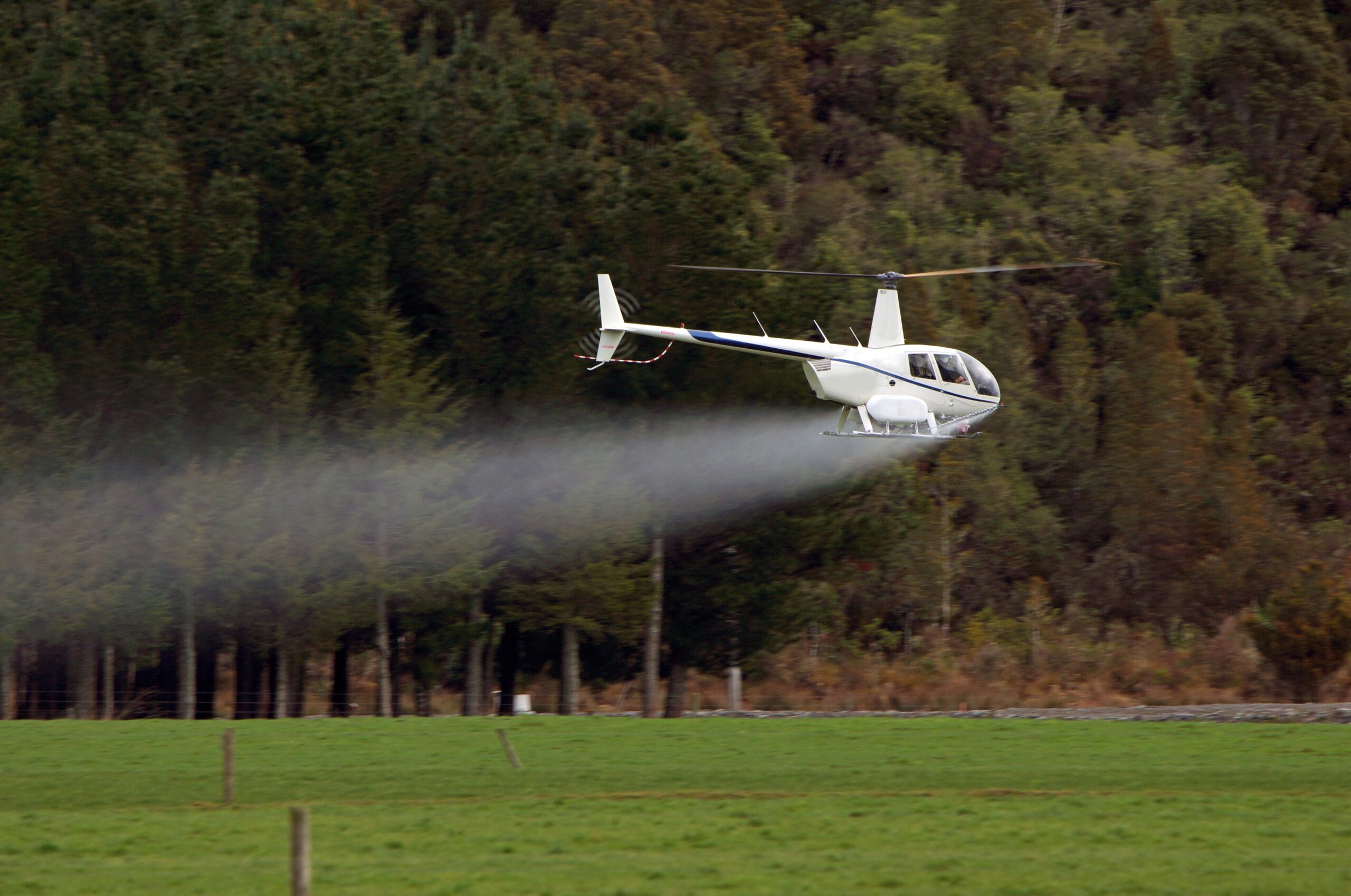
New Zealand leaders are demanding that police stop spraying chemicals on cannabis
New Zealand’s recently revived cannabis eradication is out of control, local residents say. For example, a couple who were growing three cannabis plants last February were having dinner together when a helicopter flew overhead and sprayed their three cannabis plants with chemicals they were using for medicinal purposes.
The program is not faring well in the modern world – not at a time when nearly 70% of New Zealanders support legalization or decriminalization. Both leaders and residents are fed up with the waste of resources as the country moves toward cannabis reform.
Legalization supporter and Green MP Chlöe Swabrick said spraying cannabis plants from helicopters is not the way to solve this problem. Last February, the New Zealand Police National Headquarters made the decision to revive its cannabis eradication programme, which was suspended in January 2021.
“But obviously we have an incredibly ineffective law if that amount of money is being spent continuously annually and is not affecting the supply on the streets,” Swabrick told Stuff.co.nz yesterday.
Instead, Swabrick suggested focusing on a real problem the country is struggling with — such as meth. On June 9, New Zealand Customs issued a press release saying it had “435 grams of methamphetamine, approximately $455,000 in cash and Items related to Clan Laboratories”.
New Zealand Drug Foundation chief executive Sarah Helm agreed police policy is at odds with what is happening across the country. “Nearly half of the country voted to fully legalize cannabis in the 2020 referendum,” Helm said. “A poll commissioned by the Helen Clark Foundation last year found that 69 percent of New Zealand respondents supported either full legalization or decriminalization of cannabis.”
Meanwhile in New Zealand… police fly a helicopter over the couple’s home and spray toxic herbicide on three cannabis plants
*This is the drug war to enforce drug apartheid https://t.co/clC2UHpWdh
— Julian Buchanan PhD (@julianbuchanan) February 4, 2022
According to unsupported documents provided to the Waikato Times under the Official Information Act of New Zealand, the country spent $2,653,878 on nationwide aerial spraying of cannabis over the past five years. Locals are fed up that over $2.6 million has been spent destroying what the majority of the country supports.
Over 48% of New Zealand voters said they support cannabis legalization in a referendum last year. A poll conducted by market research firm UMR for the Helen Clark Foundation found that a further 20% more or less voted no but said they thought cannabis should be decriminalised, bringing the total to 69%.
What the heck do cops spray on weed?
So what exactly do cops spray on weed? A journalist from Te Ao Māori News also wanted to know in 2018.
Officers were asked what substances they were using and one officer told Te Ao Māori News “nothing, just dye and water”. But local resident Whetu Paitai caught police officers in the act pouring a mysterious blue liquid onto the beach and posted a video on Facebook. Turns out it’s the same herbicide they use to kill weed plants.
“I took a picture of the container and googled it to find out it was an AGPRO weed killer called Bio-Safe,” Paitai said. “They have a Hazchem code of 2XE, which means any waste material must be contained and removed in order to be properly disposed of, as opposed to material that you can simply dilute.”
According to AGPRO Bio-Safe’s Safety Data Sheet (SDS), it can harm aquatic life with “long lasting effects” and is classified as a toxic despite being made from natural ingredients.
A police spokesman claimed the spray used only affected plants and didn’t have a major impact on the soil. “A blue marker dye, which is non-toxic and environmentally safe, will be used to alert growers that a crop has been sprayed,” the spokesman said in a statement.
With herbicides, we can learn from the past. When US-funded cannabis eradication programs in Mexico (and other countries) used the dangerous herbicide paraquat in the 1970s, the weed made its way back to the United States, where it eventually harmed Americans.
In March 1978, it was determined that 21% of the analyzed marijuana samples from the Southwest United States were contaminated with paraquat. A recent study on paraquat poisoning in 2020 shows that “the in-hospital mortality rate was 72.7%” of the people surveyed, with “acute kidney injury” being the main reason. It is also thought to cause Parkinson’s disease.
There are dangerous effects of smoking pesticides, herbicides and fungicides (in legal operations, especially Myclobutanil). In addition, herbicides can damage leaves, shoots, flowers and fruit – and the spray gets everywhere. Lab-tested legal weed is usually tested for such contaminants. There must be better ways to contain illicit cannabis crops without spraying them with chemicals.

Post a comment: